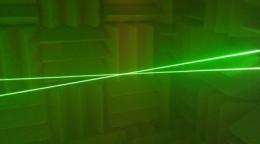Chemical nano-lasers Structure, performance (based on PhD in nano-microelectronics)
Researcher and author: Dr. ( Afshin Rashid)
Note: Chemical nano-laser is usually called a laser whose mass inversion is obtained directly from a chemical reaction. In chemical nano-lasers, there is usually a chemical reaction between the gaseous elements. In this case, a large amount of reaction energy remains as the vibrational energy of the molecules.
In this type of nano-laser, energy changes resulting from a chemical reaction excite some products and thus invert the population, which is followed by laser action. Decomposition of nitrosyl halide by light can be mentioned as an example. Nitrosyl is excited in the decomposition of the halide . And it can be chlorine or bromine. Due to the presence of high-intensity fluorescence radiation from some lanthanide compounds, the use of these systems has not received much attention. These compounds have made it possible to create a nano-laser beam. One of the proposed mechanisms for this process is that first the ligand is excited and then a mutation without intramolecular radiation takes place at the excited level of the metal, followed by the metal ion returning to the base level by emitting fluorescent radiation.This radiation is the source of the nano-laser light beam. Dioctones are among the ligands that react chemically by producing compounds. In such systems, controlled nano-lasers can be obtained using various metal-chemical ions. But these systems need low temperatures to ensure good performance.
Chemical nano-lasers have excellent beam quality due to the transfer of excess heat from the laser cavity through the ultrasonic current. He proposed the chemical nano- laser, recognizing that many chemical reactions precipitate excess energy in the tensile vibrations of the newly formed bond . If the chemical reaction in the nano-laser leads to the production of structures with more internal energy than states with less internal energy.
Conclusion :
Chemical nano-laser is commonly referred to as a laser whose mass inversion is obtained directly from a chemical reaction. In chemical nano-lasers, there is usually a chemical reaction between the gaseous elements. In this case a large amount of reaction energy remains as the vibrational energy of the molecules.
Researcher and author: Dr. ( Afshin Rashid)
PhD in Nano-Microelectronics




